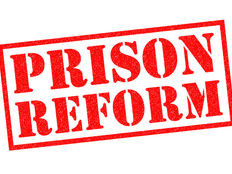
The American prison system is an $84 billion industry that has been viewed as a lucrative and recession-proof business by private corporations that run private correctional facilities in the U.S.
In a letter to its shareholders in 2011, Corrections Corporation of America (CCA) wrote:
“We remain very positive about the outlook for CCA and the private corrections industry. We believe market dynamics continue to favor the clear value that partnership with CCA privates to local, state, and federal governments. CCA can help them meet their corrections needs effectively, safely, and humanely. We believe there is increased interest in privatizing existing prison beds to obtain cost savings and that future demand will likely be weighted toward beds owned and managed by the private sector.”
Now, let’s take a quick look at some of the startling figures presented by The Sentencing Project:
- U.S. population accounts for 5 percent of the world population but houses roughly 25 percent of the world’s prison population
- Homicide and other related offenses make up of only 3.2 percent of the prison sentences, whereas drug offenses make up approximately 46 percent of the prison sentences
- African Americans account for 13 percent of the US population but make up 40 percent of the U.S. prison population
As the prison population grew over the years, even many state and local politicians viewed it as an opportunity to welcome the construction of prisons in their respective jurisdictions assuming it will create correctional jobs, housing growth, sales tax growth and overall growth in their tax base.
In this article, we will take a closer look at the criminal justice reform, the role of local and state governments and challenge the common belief held amongst local and state governing authorities that the construction of a prison facility can revitalize the local economy.
Criminal Justice Reform & The First Step Act
The bipartisan effort in crafting the First Step Act to “reform” the criminal justice system was widely talked about by both political parties, and politicians were quick to cash-in on the soundbite. This act was passed by Congress and President Trump signed it into law in December 2018. Given it was a step in the right direction to address the punitive prison sentences at the federal level, what does it do for the criminal justice system in its entirety? The law would only affect the federal prison system that houses 8.5 percent (approx. 180,000) of the overall prison population in the U.S. (2.1 million), whereas the majority of the prison population, above 90 percent, is held in state and local prisons.
Given these figures, it is safe to assume that mass incarceration happens at a state and local level that needs to be combated with a comprehensive set of laws and measures that will assess the legal system in its entirety from federal to local levels. Furthermore, the federal government can encourage the state and local governments to enact or consider certain criminal justice policies, in-line with the federal criminal justice reform.
However, the state and local governments will have to be willing to accept the recommendations and make certain changes. In addition, some states in the U.S. are far ahead on the criminal justice reform talks than what the federal government has recently been able to enact through its First Step Act.
The Responsibility of Local Government Leaders
Historically, the prison facilities were constructed near metropolitan areas due to high crime rates in more densely populated areas and easy transportation of prisoners. However, in the late 1980s the through the 1990s, there was a distinct shift in the construction of prison facilities from the metropolitan areas to small towns throughout the U.S. The proposition to construct more prison facilities in smaller towns received a great deal of support from local government leaders and some even offered land and additional construction projects, building additional roads etc., to facilitate the move.
The entire rationale of local government leaders was based on an untested premise that new construction of prison facilities will attract more businesses, enhance sales tax growth, tax-base growth with a population increase, and new correctional facility jobs for the small town. However, the decades’ worth of data and analysis shows that prison towns show no significant growth in any of its revenue sources when compared to non-prison towns.
A report presented to the Journal of the Community Development Society titled, The development of Last Resort: The impact of New State Prisons on Small Town Economics, by Terry L. Besser and Margaret M. Hanson shows extensive research and data that contradicts the common belief historically held by local government leaders to welcome the construction of prison facilities in their towns. The report states:
- The potential benefit of creating a limited amount of jobs is often negated by the stigma associated with a “prison-town” that often results in a net outflow of people and businesses to “non-prison” towns.
- Federal and/or state prison facilities do not pay any property or sales taxes and private prisons are often awarded tax abatements. Furthermore, the local businesses often do not benefit, because the majority of the prison’s purchases are centrally made outside of the small town.
- Prisoners in a small-town prison are counted as residents of that town in the census. Since they make little to no money, they significantly alter the average income and poverty levels of that town.
What Does Reform Mean for Municipal Debt Investors
Most prisons in the United States are built with the issuance of municipal debt, at the local level, and state grant funding. As more and more voters are opposing the construction of prison facilities in their cities or towns, and you need a ⅔ voter approval to issue any general obligation debt to fund the prison projects, you often see the use of Lease Revenue Bonds (LRB) being used to build prison facilities that often do not require any voter approval for its issuance.
The LRB is supposed to be issued to construct projects that will generate a revenue stream to pay the debt service. However, prisons often don’t generate enough revenue, or any at all, to sustain the issuance of LRBs. So how is it being done?
- One way it’s done is by segregating the issuance of debt by one department of the local or state government and putting the responsibility of paying the debt on another. For example: if the Department of Public Works is building a prison using LRBs, they may state that the revenue to pay this debt will come from the Department of Corrections, which will then use its allocated budget to make debt service payments. Now, where does the Department of Corrections get their funding? The state or local tax revenues.
- Investors must carefully examine the structure of debt issuance by analyzing the official statements and reading any pertinent credit rating agency reporting to ensure the validity and security of the debt issuance.
- It’s also important to consider the worst-case scenarios such as municipal bankruptcy or state slashing its corrections budget and how that may impact an investor’s debt holdings into prison bonds.
The Bottom Line
Prisons do not revitalize local or state economies – they often serve as a detriment to the local economies. Another important point to note is that as the prisons have shifted to smaller towns, it takes the federal dollars away from where the crimes are committed and given to small towns where the prisoners are being held – strictly driven by the census data. As more and more governing bodies are taking the criminal talks seriously, the prison population may start to decline, which may warrant for authorities to start consolidating the prison locations.
Disclaimer: The opinions and statements expressed in this article are for informational purposes only and are not intended to provide investment advice or guidance in any way and do not represent a solicitation to buy, sell or hold any of the securities mentioned. Opinions and statements expressed reflect only the view or judgement of the author(s) at the time of publication and are subject to change without notice. Information has been derived from sources deemed to be reliable, the reliability of which is not guaranteed. Readers are encouraged to obtain official statements and other disclosure documents on their own and/or to consult with their own investment professionals and advisers prior to making any investment decisions.






